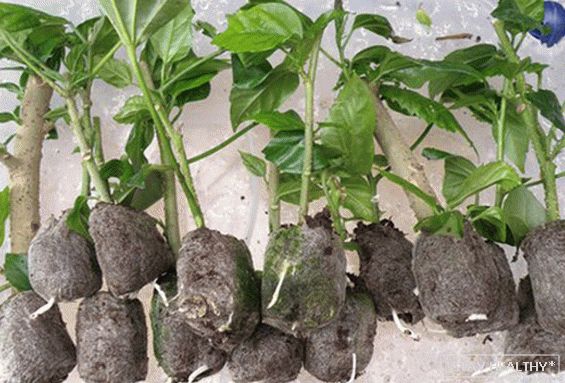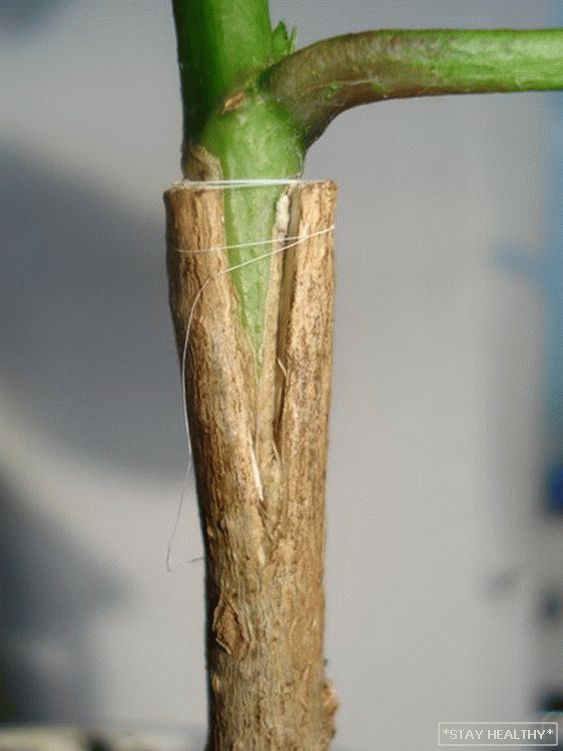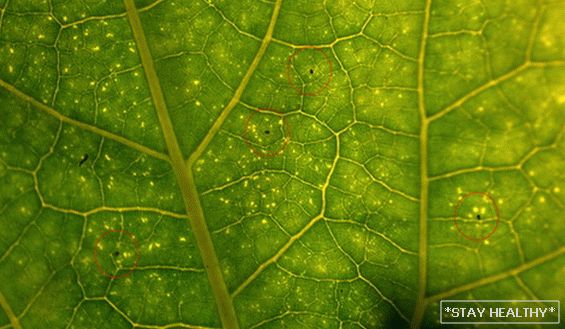 Пн, 30 май 2016 Автор: Эльвира Корчагина
Пн, 30 май 2016 Автор: Эльвира Корчагина
Chinese rose – one of the types of hibiscus.
His homeland is considered East Asia. In Haiti, this plant
is a symbol of the island.
Thanks to its large bright flowers, hibiscus has become popular
among experienced flower growers and just lovers.
Chinese rose blooms with double, single single flowers
different colors.
The flowers of varietal plants can combine a variety of
a palette of contrasting shades in the form of a speck on the main background,
concentric rings and bands.
There are also varieties with variegated (variegated) foliage.
Contents
Chinese rose: home care – breeding,
transplanting, trimming
Breeding methods
The Chinese rose is propagated by seeds, cuttings and grafts.
Семенной способ начинается с правильного выбора
seeds. They can be bought in specialized stores, from
collectors or pollinate their own plants and wait
ripening seed pods. In any case, these will be hybrids.
first generation F1. Seed germination of Chinese rose decreases from
second year storage. If possible, it is better to use
for planting fresh seeds of the current year.
Seed material is soaked before planting in Épinay at 10-12
hours, then put in a peat-sand mixture or in a universal
soil for indoor plants to a depth of 1-1.5 cm. Seed dish
cover with glass or put in a mini-hothouse. Landing periodical
Moisturize with a spray bottle and air. Seeds germinate when
temperature + 25-27 ° C. After the appearance of 2-3 leaves, seedlings dive
in separate cups. Plants grown from seeds will bloom
after 3-4 years of growing season and may not save varietal characteristics
maternal plant.
Размножение черенками более быстрый способ
grow a chinese rose. For grafting choose
semi-woody twig: green shoots when rooting easily
rot, and old lignified poorly cope with building
callus. It is better for rooting to take apical cuttings.
The optimal length for cuttings – 15 cm. The lower leaves on it
remove, leaving 4-6 upper. If the leaves are large (this applies to
varietal hibiscus), they are cut into 1/2 or 2/3 of the area for
reduce moisture evaporation. Slices are dipped into stimulants.
root formation (Kornevin, Roots, etc.).
Root can be both in water and in the ground, in which quality
take peat-sand mixture or perlite. Can use
peat tablets.

Hibiscus cuttings rooted in peat tablets
Seedlings are placed in a mini greenhouse or covered with packages. When
roots will appear, they are transplanted into separate pots with nutrient
soil mixture of humus, sod land, sand or perlite
(vermiculite) in a ratio of 2: 1: 1. At the bottom of the tank must be
fill the drainage of expanded clay, crushed foam or fine
pebbles – the Chinese rose does not tolerate stagnant moisture. Young plants
actively grow and stretch. Therefore, to form a compact
Bush, they have to pinch shoots. With good flowering care
can get this year.
The above breeding methods are only suitable for
common “grandmother’s” hibiscus. Many varieties of hibiscus
Dutch, Florida, Taiwanese, Indian breeding is not
take root at all. They are planted on the stock, in which quality
use rose.

Inoculation of varietal hibiscus on the stock
Transplant and pruning
The Chinese rose is rapidly increasing the crown, so that
indoor conditions restrain plant growth, adult hibiscus
transplanted 1 every 3-4 years. If the plant is tubular, then replace
Only topsoil for fresh. Young hibiscus roll over
annually as the pot is filled with roots.
Hibiscus is grown as a bush and as stem forms. For
This is done by pinching young greens and pruning lignified
shoots. Moreover, the buds are laid only on shoots
current year. Twigs are shortened by 2/3 of the length. Cut cuttings
used for rooting.
The shape of the bush Chinese rose can be given, if drastically
trim it and leave a stump height of 7-8 cm. After 3-4 months at
the base of the stem will appear young shoots. This method is good at
conditions of space deficit on the windowsill, when there is no place to put
another plant pot.
Chinese rose: home care – soil, lighting,
flowering conditions
The soil
For выращивания китайской розы подходит питательный грунт с
neutral reaction (pH = 6). It consists of humus, sod
or sheet earth and sand (2: 1: 1). As a baking powder
add perlite or vermiculite. When planting is required drainage, so
like hibiscus does not like stagnant water in the soil.
Lighting
Hibiscus needs good ambient lighting. In spring and summer
period will be optimal placement on the western or eastern
windows. On the south side in order to avoid leaf burns will be required
shading from direct sunlight. In the warm season, the Chinese
the rose can be sent to “get some fresh air” in garden, balcony,
the terrace. If this is not possible, then air more often.
the room. In the autumn-winter season to increase the duration
daylight will require additional lighting. For этого
use fluorescent lamps by placing them above the plants on
height 0.5-0.6 m. Due to this hibiscus will bloom even
in the winter.
Air temperature and humidity
Optimum temperature for Chinese roses + 18-25ºС
летом и 16-18ºС in the winter. They withstand heat (over + 28ºС), but with
high humidity (60-70%) and protection from direct midday rays
the sun. Otherwise, when dry air begins to multiply massively
malicious hibiscus pest – spider mite. �”Chinese” will
happy warm soul and daily spraying.
In the cold season when airing the room you need to be
cautious – the Chinese rose is afraid of cold drafts.
Chinese rose: home care – feeding and
watering
Hibiscus during the active growing season and flowering need abundant
watering. Осенью и зимой wateringают умеренно, через 2-3 дня после
drying of topsoil. Lack of moisture chinese roses
poorly tolerated and begin to drop buds and leaves. With
overmoistening possible rotting of the roots and the development of fungal
diseases to which hibiscus is poorly resistant.
Chinese rose is responsive to the introduction of fertilizing. They begin
carry out with the beginning of the active growing season (in March-April). For этого
Suitable complex fertilizers for flowering indoor plants
(Rainbow, Master, Ideal, Terrasol Lux, Pokon, Etisso, etc.). Good ones
results are obtained using the drug Baikal-EM1. He contains
lactic, photosynthetic, nitrogen-fixing bacteria that
improve the qualitative composition of the soil and as a result increases
plant immunity, the number of buds increases and lengthens
flowering period. During the budding and flowering hibiscus
need an increased dose of phosphorus and potassium, so during this period
You should feed the plants with these fertilizers once every 2 weeks.
Important! Удобрения вносят только после wateringа
soil, otherwise there will be a chemical burn of the root system!
The main problems in growing Chinese roses at home
conditions
Problems with growing Chinese roses appear when
improper care. So, hibiscus begins to “throw” buds when
nutrient deficiency, drying out of the soil, low temperature
of air.
If the plant does not bloom in the presence of abundant foliage, it says
that it is overfed with fertilizers with a high content
nitrogen, it lacks lighting.
Chlorosis (uneven yellowing) of leaves in hibiscus occurs
при повышенном содержании в wateringной воде хлора и солей кальция,
lack of nitrogen and iron, decay of the root system with abundant
wateringе.

Chlorosis on Chinese rose leaves
Dry warm air contributes to the rapid reproduction of the very
главного врага китайской розы — паутинного
клеща.

Spider mite leaf of Chinese rose
For сдерживания популяций этого вредителя важно поддерживать
increased humidity in the room: spray plants more often,
weekly arrange them a warm shower. Get rid of the parasite if
He has already appeared, difficult, but possible. If there are few ticks, they spend
flower treatment with soapy water. With неэффективности этого
method used acaricides Aktellik, Fitoverm, Fufanon others
The second of the most common pests of hibiscus is
оранжерейная белокрылка. Adult insects
hiding on the underside of the leaves. On sticky feces of imago
развивается сажистый гриб (выглядит как черный
velvety patina). As a result, the damaged leaves turn yellow and
dry out prematurely. In addition, whiteflies carry viral
diseases (yellow mosaic, leaf curl, etc.). For борьбы
several insecticide treatments are carried out with these pests.
different chemical groups (Aktara, Admiral, Mospilan, Biotlin).





